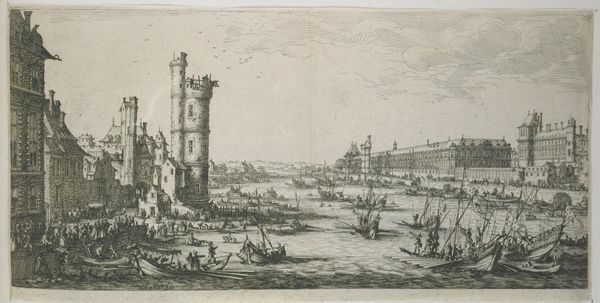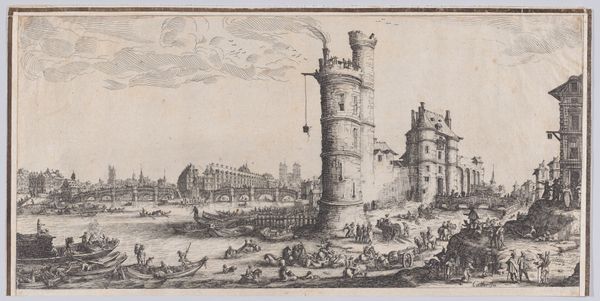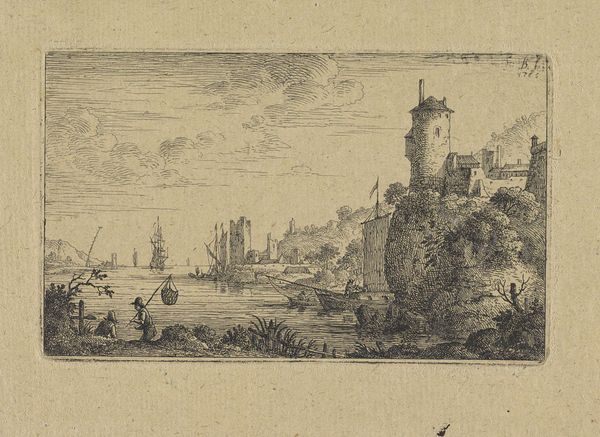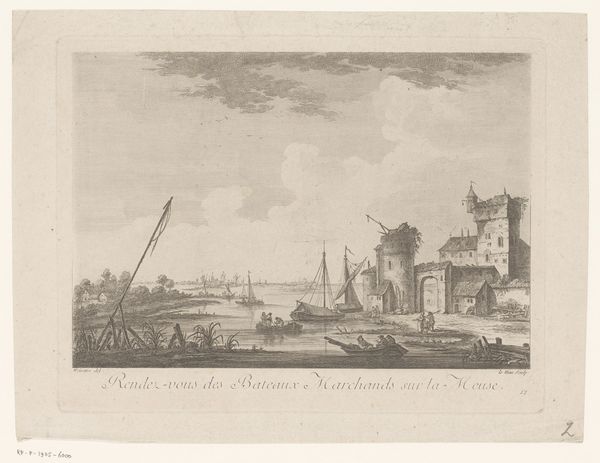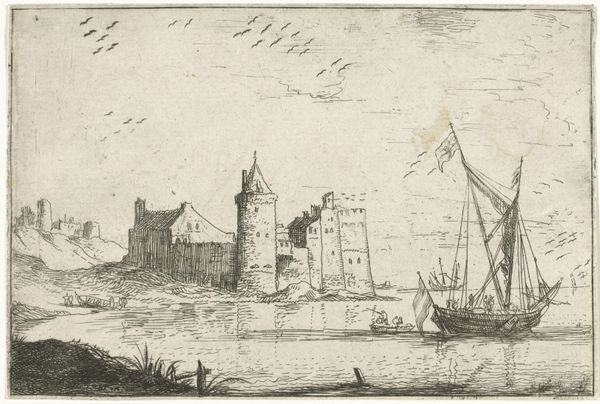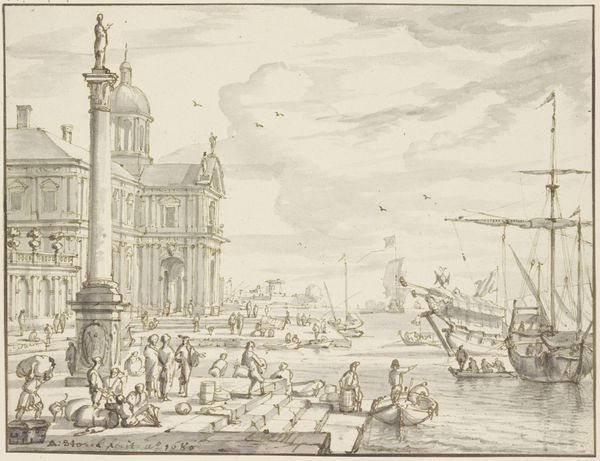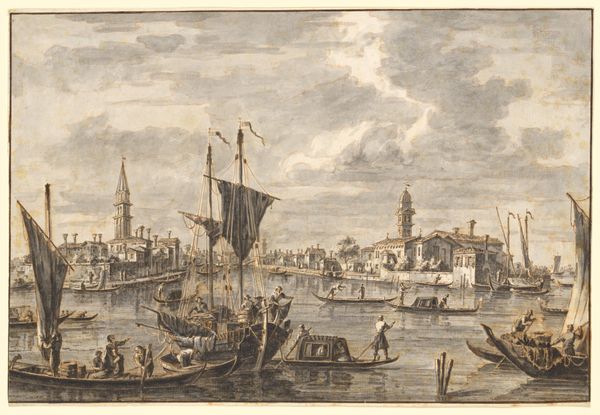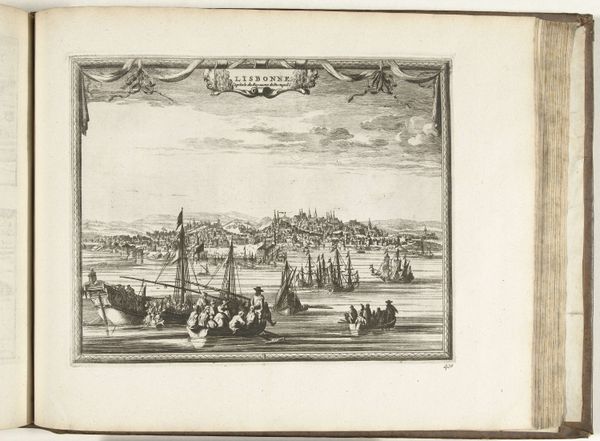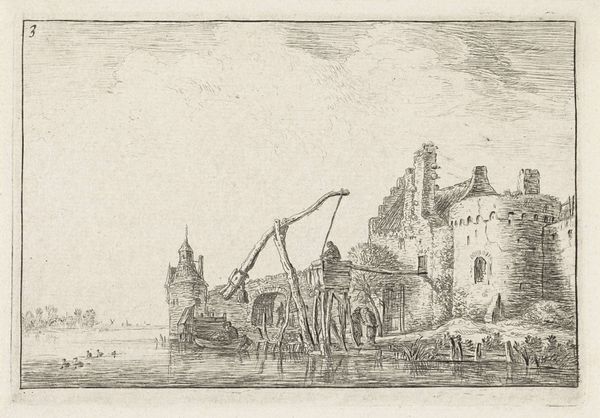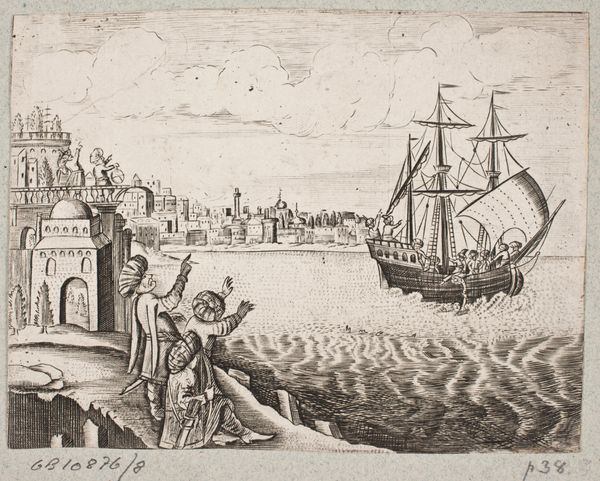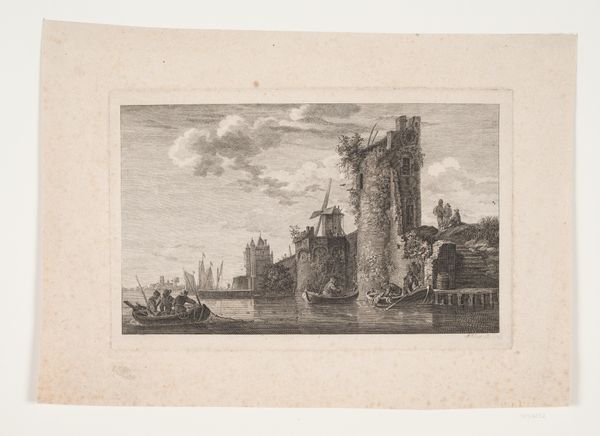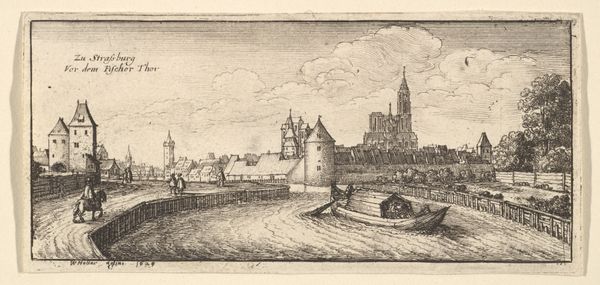
Copy of Vue du Louvre (View of the Louvre), from Les Deux Grandes Vues de Paris (The Two Large Views of Paris) 1625 - 1700
0:00
0:00
drawing, print, etching
#
drawing
#
baroque
# print
#
etching
#
landscape
#
etching
#
cityscape
Dimensions: Sheet: 6 7/16 x 12 15/16 in. (16.3 x 32.8 cm)
Copyright: Public Domain
Editor: Here we have an etching entitled, "Copy of Vue du Louvre (View of the Louvre), from Les Deux Grandes Vues de Paris (The Two Large Views of Paris)", created sometime between 1625 and 1700 by an anonymous artist. The level of detail is impressive, but it also makes me think about the time and labor involved in creating something like this. What can we say about its production? Curator: Look closely. Consider the repetitive lines that form the cityscape and the meticulous rendering of the boats. This print, an etching, would have been produced through a complex process involving specialized tools and the skilled labor of a printmaker. We must ask, who would have had access to this kind of image? Editor: So, not just anyone could make one of these. And maybe not just anyone could afford it, either. Was it intended for a specific social class or purpose? Curator: Precisely. This "Vue du Louvre" presents a constructed vision of Paris, showcasing architectural achievements and bustling trade. But what's missing? Consider the laboring bodies that enabled this image. The print normalizes power; through this "view", we have to remember what it obscures. Editor: I see your point. We admire the artistry, but we must also remember the broader social context – who made it, for whom, and what ideas it reinforced about class. Curator: Yes. And how this mode of reproducible imagery reshaped perceptions of space, power, and even national identity. Think about it - an image like this circulates ideas far beyond the physical Louvre itself. Editor: That definitely changes how I see it. Thanks – I'll remember to consider the layers of production and consumption when looking at art. Curator: A materialist lens lets us interrogate beyond the mere aesthetic. We see art embedded within its intricate social and economic conditions.
Comments
No comments
Be the first to comment and join the conversation on the ultimate creative platform.
